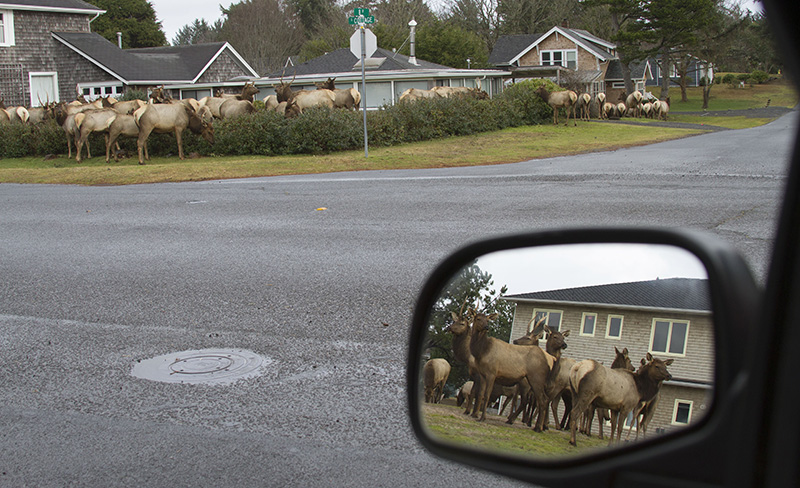
Elk have a long history on the northern Oregon Coast—much longer than humans. And they got along well with humans here, sharing the landscape, for 10,000 years or more. Market hunters nearly wiped them out 200 years ago. But they’re back, and they’re more visible than ever. Witness the congregation in the middle of Gearhart, above, or the “elk jam,” below, at NCLC-conserved Neawanna Point in Seaside. “The elk are the same,” Gearhart naturalist and photographer Neal Maine says. “The culture is what’s changed.”
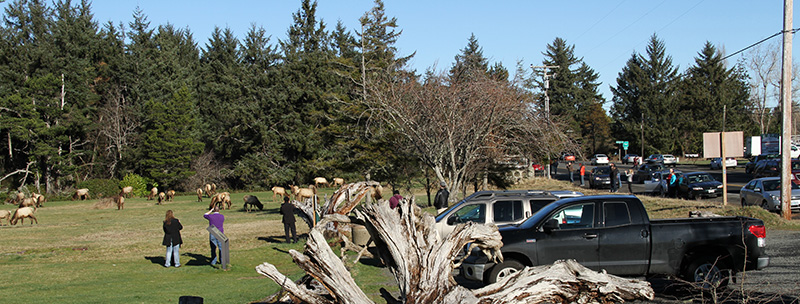
Living on the northern Oregon Coast means getting along with elk, Neal says. He is a close observer of the animals. And he suggests that as you get to know them, you are less likely to be annoyed by the elk jams they cause and by their consumption of exotic plants in your yard and more likely to be in awe of their smarts, their adaptability, and their sheer beauty.
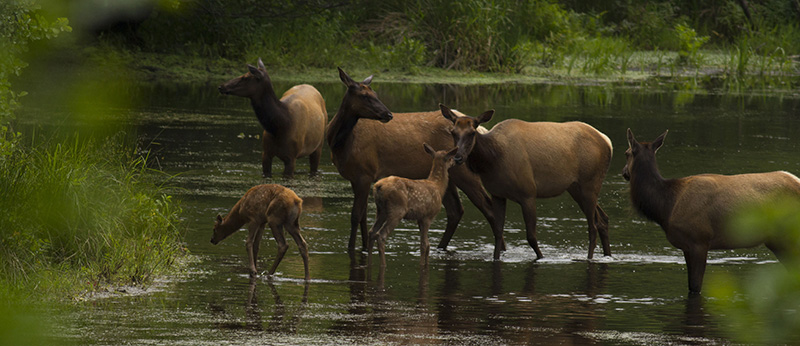
Elks’ split hooves allow their feet to spread out, distributing their weight and allowing them—despite their great size—to comfortably walk through wetlands, such as Little Neacoxie Wetlands, above, or over the spongy sphagnum moss at Butterfield Fen, below. (Both properties are in Gearhart, and both are conserved by NCLC.)
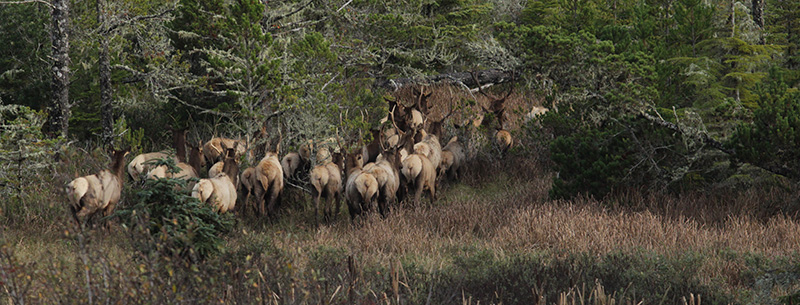
Elk are herbivores. They have top and bottom molars that allow them to mash the food they forage.

But they have front incisors only on their bottom jaw; they don’t really cut grasses and forbs when they browse open meadows (or, as the case may be, the leaves in someone’s apple orchard, above, or the escallonia-planted yard, below). Instead they snatch the leaves between their bottom teeth and hard upper gum and pull. After being mashed, those leaves then go through the elk’s four stomachs, which, Neal speculates, may break down certain seeds’ hard outer coating but not the germ of the seed. Which leads him to wonder about the role elk may play in dispersal of native plants.
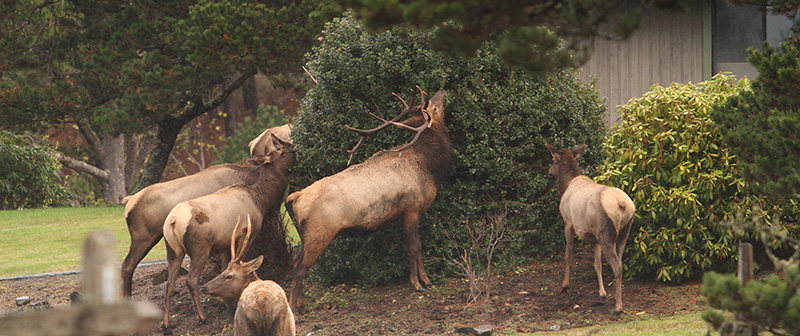
Elk adjust. They adjust their eating habits to include what’s available, native or otherwise. They move through a landscape their ancestors have been moving through for millennia, negotiating their way across busy highways when they must.

Elk also adjust to changes in the landscape. Neal thinks they can even anticipate changes in the tide, such as at Neawanna Point (below) “They go across someplace that is dry land and come back in a matter of hours and find it’s a barrier because it’s 5 feet deep,” Neal observes. “I’ve seen them hang out, appearing to wait for low tide, to get across the Necanicum. I’ve watched them so many times; they’ve got to know what’s going on there.”
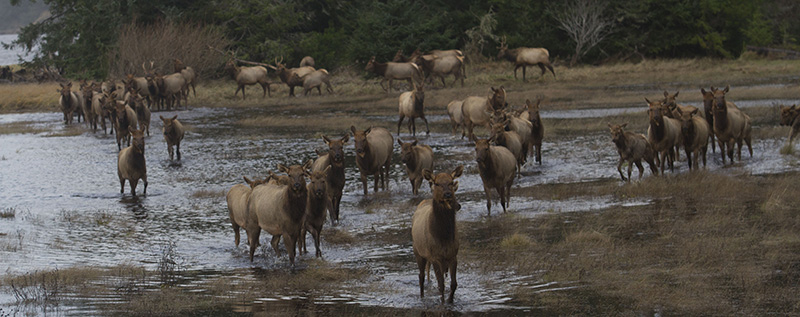
Elk are insatiably curious. “They’re always poking at everything,” Neal notes—in this case, someone’s garden ornaments.

Elk are remarkably tolerant of humans. Cow elk draw the line, however, when anyone appears to be threatening a calf. Which is why summer is about the only time of year when humans might fear elk. Keep your distance, and nobody gets hurt.

For their part, roads and cars post the greatest risk to elk. As Neal puts it, “They’re living in an alien world.”

“These animals are part of the public trust in Oregon; they rise above ‘nuisance,'” Neal says. “These are forest animals that survive through their mobility.” If elk are bothering you—by walking where you want to walk or drive, or eating the plants in your yard, for example—just sit tight for a few minutes, he says, “because they’re moving on. Wildlife comes and goes, the same as people.”
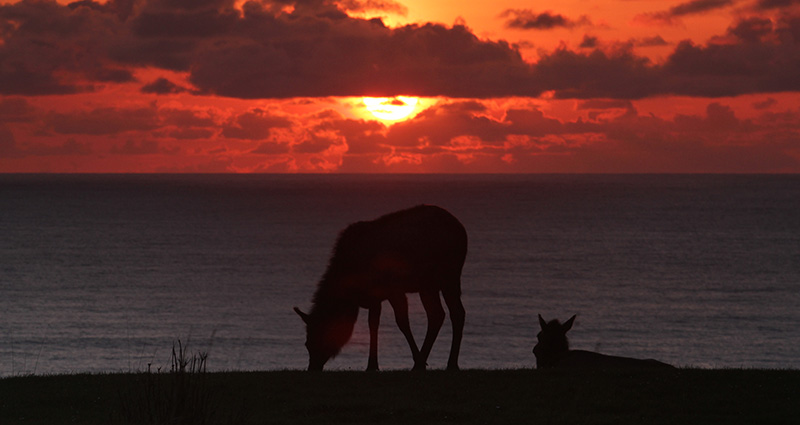
Comments